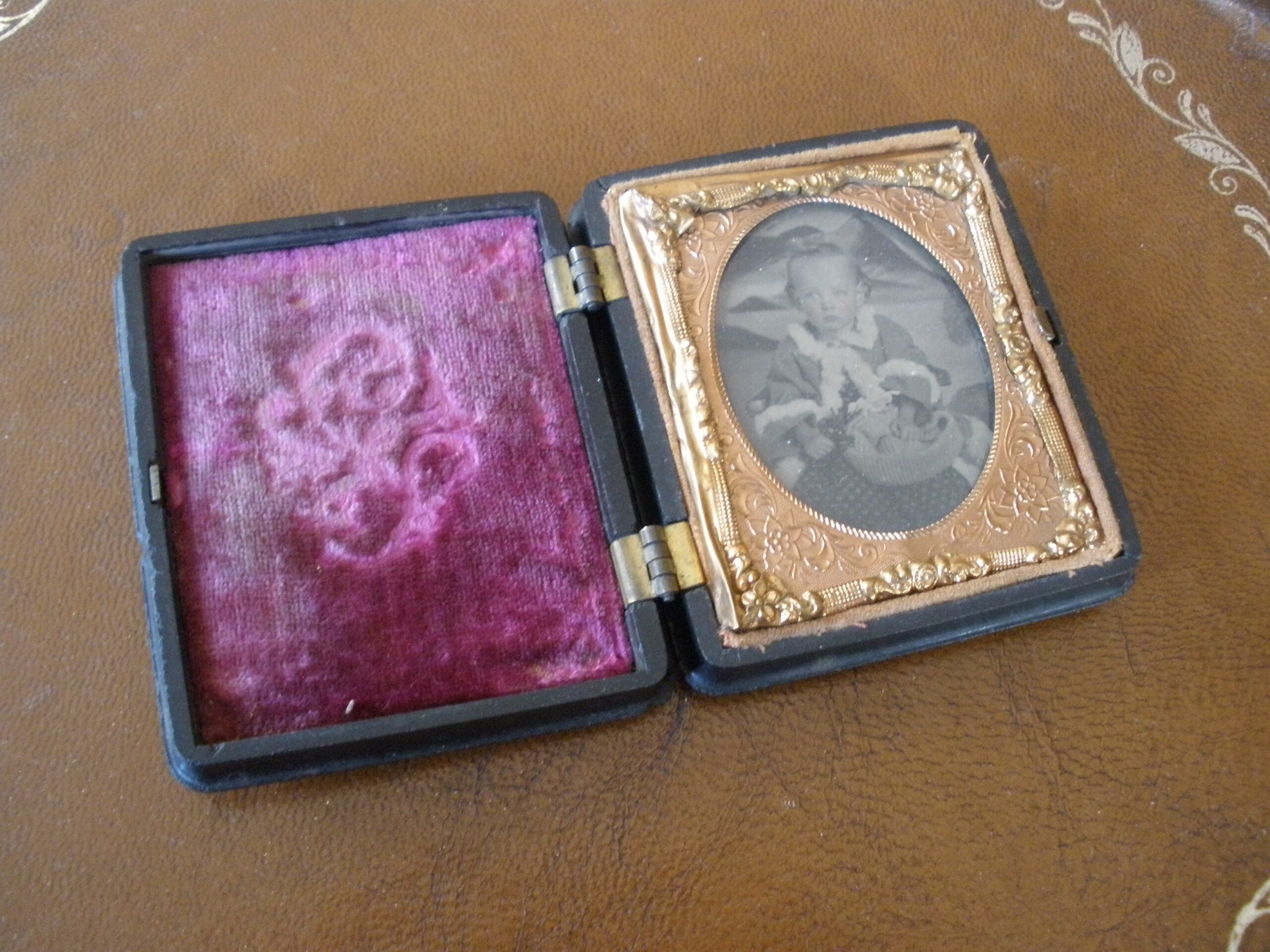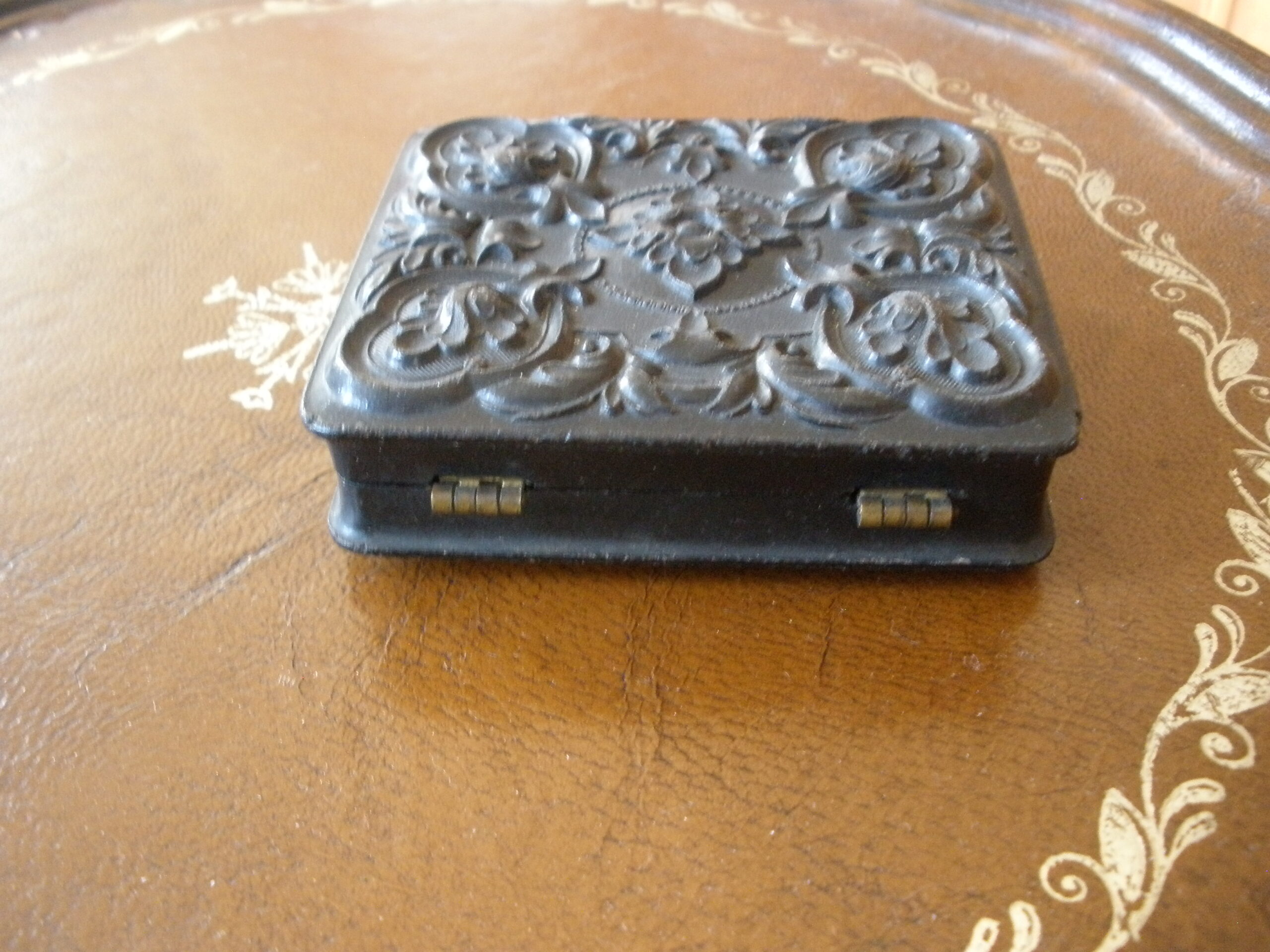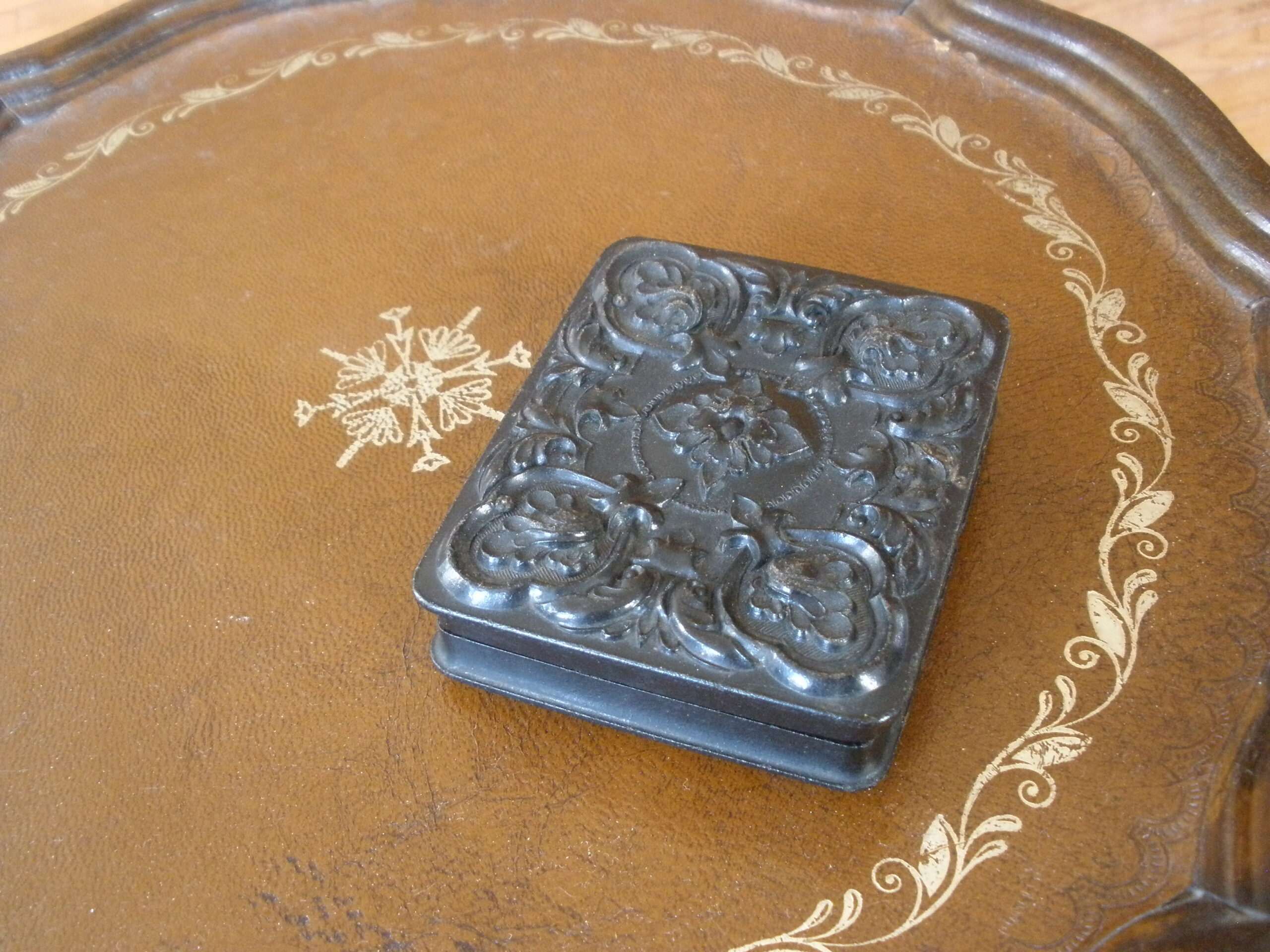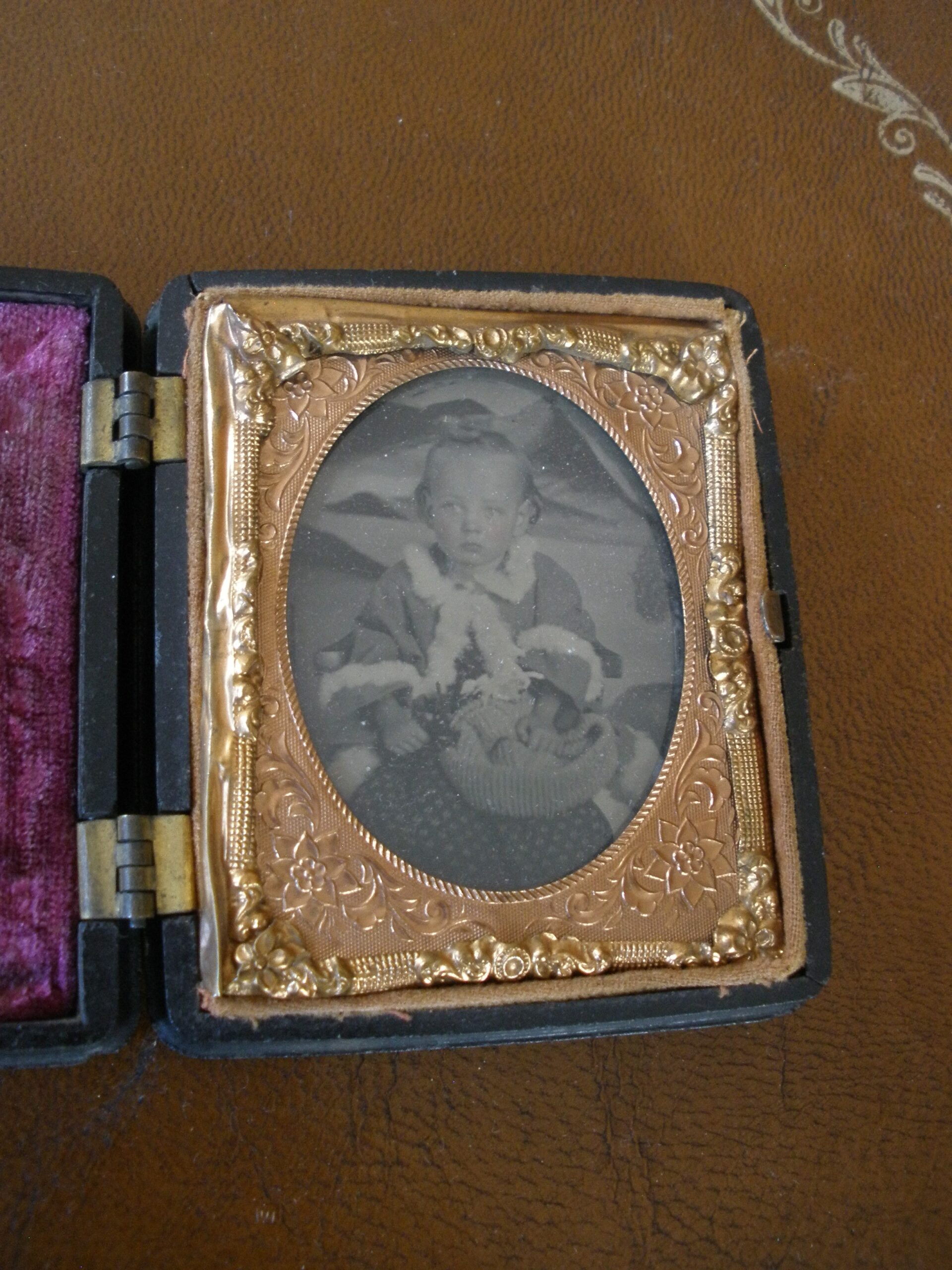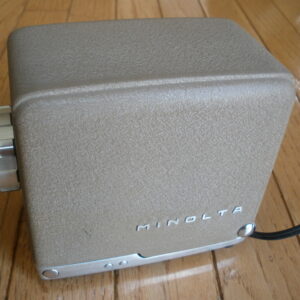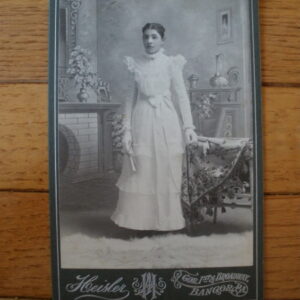For sale is a 1850s UNION PHOTOGRAPH CASE or GUTTA PERCHA CASE with a DAGUERREOTYPE of an girl toddler wearing a nice Christmas outfit. This civil war era photo was probably taken during the 1860s. This thermoplastic case features an ornate floral design. One side of the case has a velvet pillow. The hinged case measures about 3 inches by 2 1/2 inches. A top notch historic and museum quality photography collectible.
Daguerreotype was the first publicly available photographic process and was widely used between the 1840s and 1850s. Daguerreotypes photos have a mirror-like, highly polished silver surface and its dually negative/positive appearance when viewed from different angles or in raking light. Daguerreotypes are typically housed in miniature hinged cases made of wood covered with leather, paper, cloth, or mother of pearl. Daguerreotypes were produced on a thin copper metal support that had a polished coating of silver that was mirror-like. Daguerreotypes were sealed in glass for protection. The tintype replaced the daguerreotype in the 1860s because it developed much more quickly. A daguerreotype might take several hours to develop, but a tintype could be given to the sitter within minutes. Tintypes, patented in 1856, are actually on iron, not tin.
Gutta Percha consists chiefly of a hydrocarbon isomeric with rubber to make a hard durable thermoplastic substance. It is made from coagulated latex from trees which are found both wild and cultivated in Malaysia and Indonesia. Gutta Percha was America’s first plastic. In the context of antique photography, the cases made to house photos were called “thermoplastic cases”, “hard cases”, or “Union Cases.” The term Union comes from Peck who chose Union as the name to describe his process which was a union of shellac and sawdust.
In 1854, Samuel Peck received his patent for inventing the thermoplastic process. He produced a hard durable plastic from a mixture of wood and shellac that was pressed into a mold. The result was a plastic-like product that still looks good one hundred and fifty years later.

